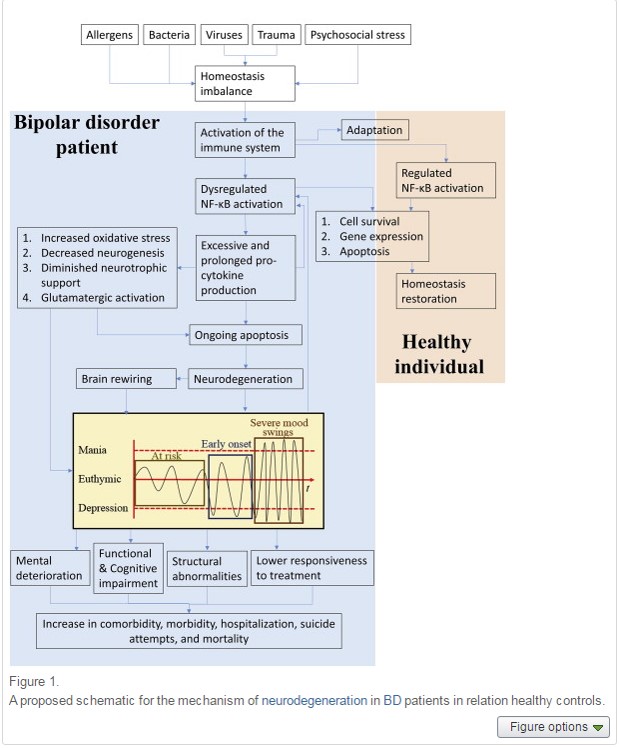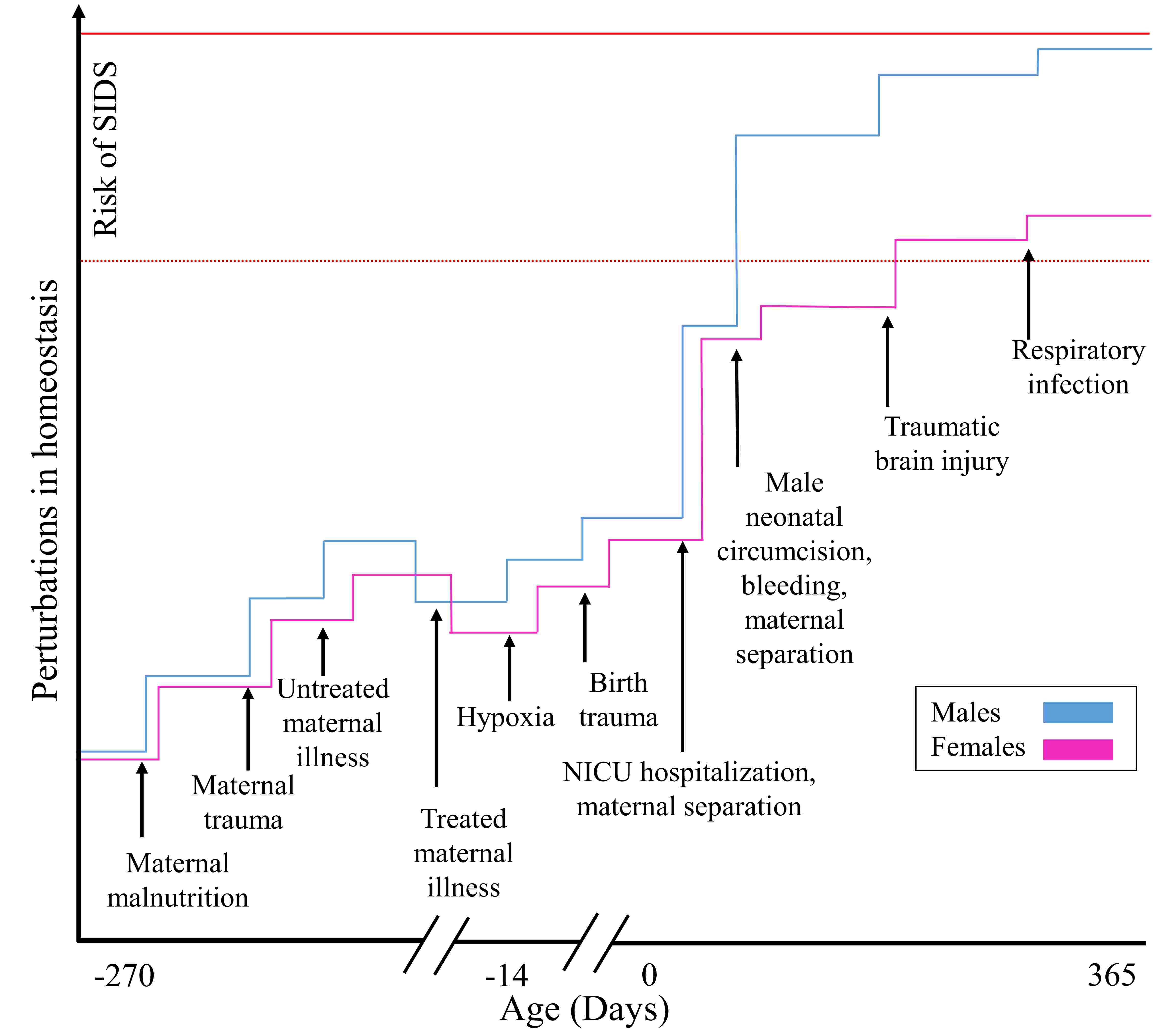Research topics:
Bipolar disorder
Sudden Infant Death Syndrom (SIDS) or Cot death
Autism
References
Dysregulation of the NF-kB pathway as a potential inducer of Bipolar disorder.
Bipolar disorder refers to a chronic condition that consists of mood swings between two different mood poles, the high pole (mania) and the low pole (depression).
In the course of their illness, bipolar patients may endure an increase in the frequency and severity of symptoms termed progression.
Inflammation is the most potent biological mechanism to explain this progression, however, thus far no specific mechanism was identified.
The over activation of immune response, observed in bipolar patients, may be due to the dysregulation of Nf-kb, a key regulator of the immune system.
In Elhaik and Zandi 2015,
we wrote the first review of NF-kB's involvement in bipolar disorder. We concluded that there is evidence
that NF-kB dysregulation is an important factor in the etiology of BD and related psychiatric disorders.
This figure from the paper illustrates how a disrgulated immune susyem contributes to the progression and cognitive damage observed in bipolar patients.
My lab employs exom sequencing data
to identify causal variants involved in bipolar disorder. Our efforts are focusing on modeling epistasis and develop gene networks.
|
|
The role of rare coding variants in ERBB4 in Bipolar disorder.
In Goes 2011, we investigated the role of rare coding variants in ERBB4 (see the gene below) in BP
cases with mood-incongruent psychotic features, which is the form of BP with the greatest phenotypic overlap with schizophrenia.
Although we found no rare variants of clear deleterious effect, we reported a modestly associated novel variant that could affect alternative splicing of ERBB4.
Further studies with larger sample sizes are needed to confirm the reported association.
|
Sudden Infant Death Syndrom (SIDS) or Cot death
is a devastating syndromes that remained unexplained even after four centuries of investigations.
No method exists to identify future at risk neonates for SIDS nor is there any proven intervention to save them.
In Elhaik 2016, we published the "wear and tear" theory for SIDS. This theory proposes that accumulation of multiple stressors in a short period of time,
primarily preterm birth, neonatal circumcision, skin breaking procedures, and seasonal illnesses can result in SIDS.
We argued that our theory explains the four main characteristics of SIDS, namely: male predominant (males are predominantly circumcised),
lower rates in Hispanics (historically anti-circumcision), most of the deaths occur within 2-4 months (weaning out of maternal antibodies,
weaker infants cannot maintain homeosthesis), and seasonal variation (infants weaker by circumcision and other stressors along with
seasonal illnesses are more likely to succumb to SIDS). Our theory is summarized in the figure below.
|
Autism
is an etiologically and clinically heterogeneous group of developmental brain
disorders, collectively termed autism spectrum disorder (ASD). Recent studies in the United States have reported that ASD occurs in 1/91 children less than 17
year age, with boys facing 4-5 times higher risk than girls. Autism is a cause of lifelong developmental disability and premature mortality due to accidents as
well as due to the presence of comorbid medical conditions such as respiratory, cardiac, epileptic events, and intellectual disability. The mortality risk
among those with ASD is nearly twice that of the general population. Autism is also associated with severe neuropsychiatric disorders, including anxiety,
depression, manic depression, obsessive compulsive disorder, attention-deficit/hyperactivity disorder, sleep disturbances, and epilepsy as well as physical and
mental impairment. The disorder is characterized by complex morphologic, neurologic, and medical phenotypes. The loss of productivity and adult care are the
largest components of the estimated cost of $35-37 Billion annually in the U.S and the U.K. Despite a large investment of resources and many years of research,
the etiology of autism remains largely unknown.
My lab is searching and testing the environmental causes of ASD and related disorders.
|


